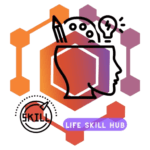Table of Contents
ToggleIntroduction:
In today’s digital age, social media has become an indispensable tool for businesses and individuals alike to connect with their audience, build brand awareness, and drive engagement. One of the keys to a successful social media strategy is the ability to analyze and measure the effectiveness of your campaigns. In this blog post, we’ll delve into the world of social media campaign analysis, exploring its importance, key metrics, tools, and best practices.
I. The Significance of Social Media Campaign Analysis:
In an era where data rules, understanding the impact of your social media efforts is crucial. Social media campaign analysis provides valuable insights into your audience’s behaviour, the success of your content, and the overall performance of your campaigns. Here are some key reasons why it’s essential:
Measure ROI:
Social media campaigns often require significant time and resources. Analysis allows you to determine the return on investment (ROI) by assessing how well your campaigns align with your business goals and contribute to the bottom line.
Audience Understanding:
Analyzing campaigns helps you understand your audience better. By examining engagement metrics, demographics, and preferences, you can tailor future content to resonate with your target audience.
Optimize Content Strategy:
Social media analysis reveals which types of content perform best. Whether it’s videos, images, or blog posts, understanding what your audience prefers enables you to optimize your content strategy for maximum impact.
II. Key Metrics for Social Media Campaign Analysis:
To conduct a thorough social media campaign analysis, you need to focus on specific metrics that provide insights into different aspects of your campaign’s performance. Here are some key metrics to consider:
Reach and Impressions:
Assess the number of people who saw your content (reach) and how many times it was displayed (impressions). This helps gauge the overall visibility of your campaign.
Engagement Rates:
Measure likes comments, shares, and clicks to evaluate how well your audience is interacting with your content. High engagement rates indicate a successful campaign.
Conversion Rates:
Track the number of conversions, such as sign-ups, purchases, or downloads, directly attributable to your social media campaign. This metric is crucial for determining the campaign’s impact on your business objectives.
Click-Through Rate (CTR):
CTR reveals the percentage of people who clicked on your content after seeing it. A higher CTR indicates that your content is compelling and relevant to your audience.
Social Media Mentions:
Monitor mentions of your brand or campaign across social media platforms. This metric provides insights into brand awareness and sentiment.
III. Tools for Social Media Campaign Analysis:
Several tools are available to streamline the social media campaign analysis process. Here are some popular ones:
Google Analytics:
Integrating social media data with Google Analytics provides a comprehensive view of your website’s performance, allowing you to track conversions and user behaviour originating from social platforms.
Facebook Insights:
For campaigns on Facebook, utilize Facebook Insights to access in-depth data on page performance, audience demographics, and content engagement.
Twitter Analytics:
Twitter Analytics provides detailed information about tweet performance, audience growth, and engagement metrics, helping you fine-tune your Twitter campaigns.
Hootsuite:
Hootsuite offers a centralized platform for scheduling posts, monitoring social media conversations, and analyzing campaign performance across various channels.
Sprout Social:
Sprout Social combines social media management with robust analytics, providing insights into engagement, audience demographics, and competitor performance.
IV. Best Practices for Social Media Campaign Analysis:
To derive meaningful insights from your social media campaign analysis, follow these best practices:
Set Clear Goals:
Clearly define your campaign objectives and key performance indicators (KPIs) before launching. This ensures that your analysis aligns with your overarching business goals.
Regular Monitoring:
Social media is dynamic, and trends can change quickly. Regularly monitor your campaign’s performance to identify emerging patterns and make timely adjustments.
Compare Across Platforms:
If your campaign spans multiple social media platforms, compare performance metrics to identify which channels are most effective. This helps optimize your resource allocation.
Segment Your Data:
Analyze data by segmenting it based on factors such as demographics, location, or device. This provides a more granular understanding of your audience and campaign performance.
Learn from Failures:
Not every campaign will be a roaring success. Analyze the performance of unsuccessful campaigns to

